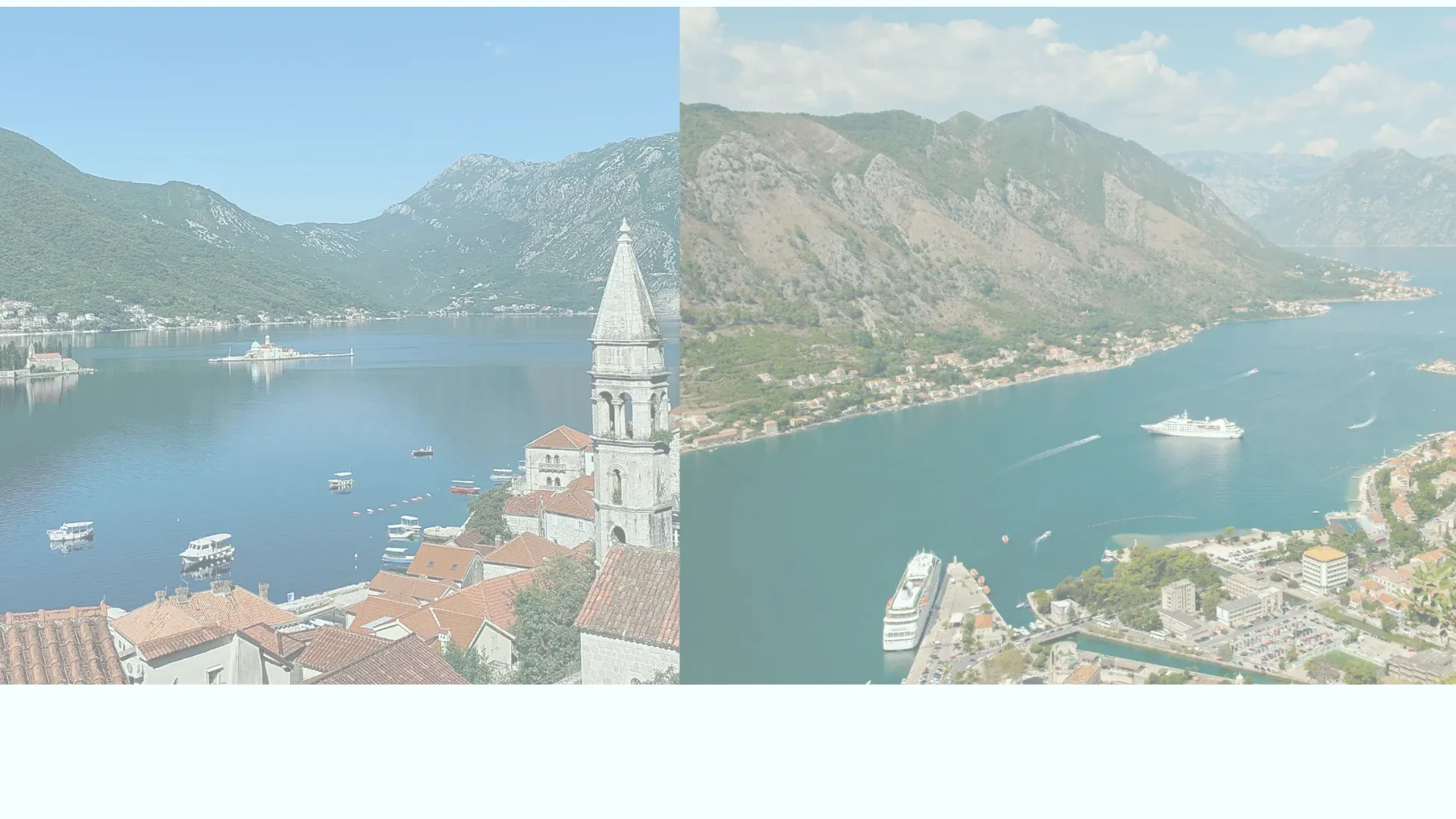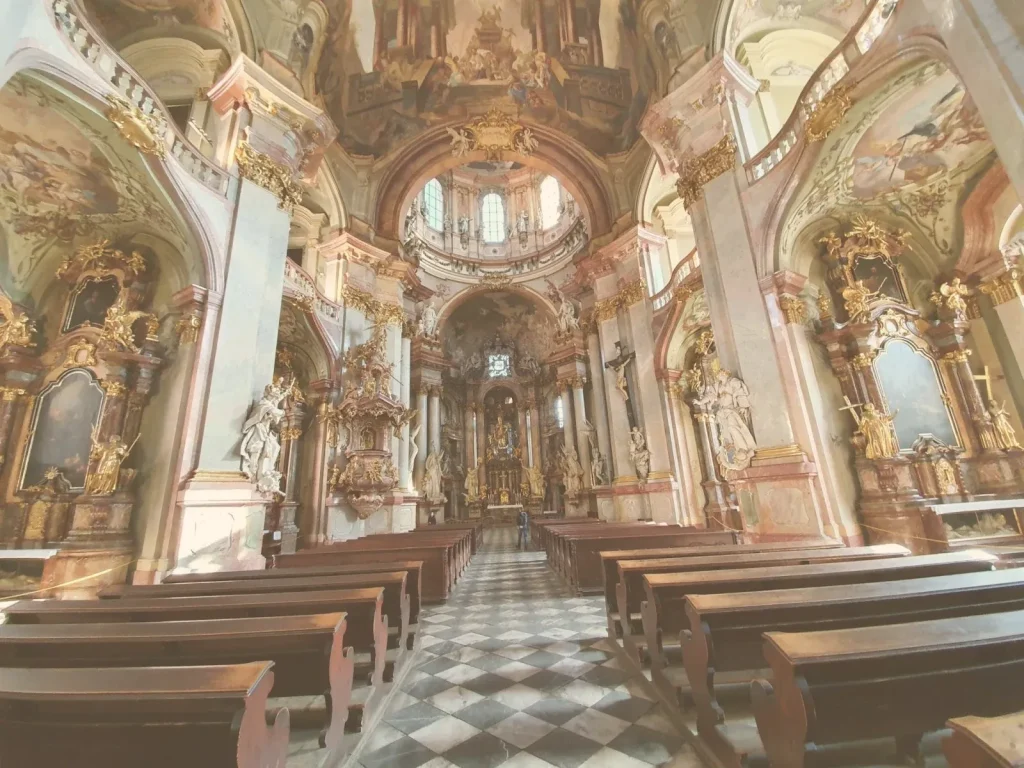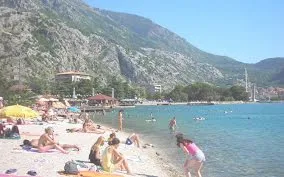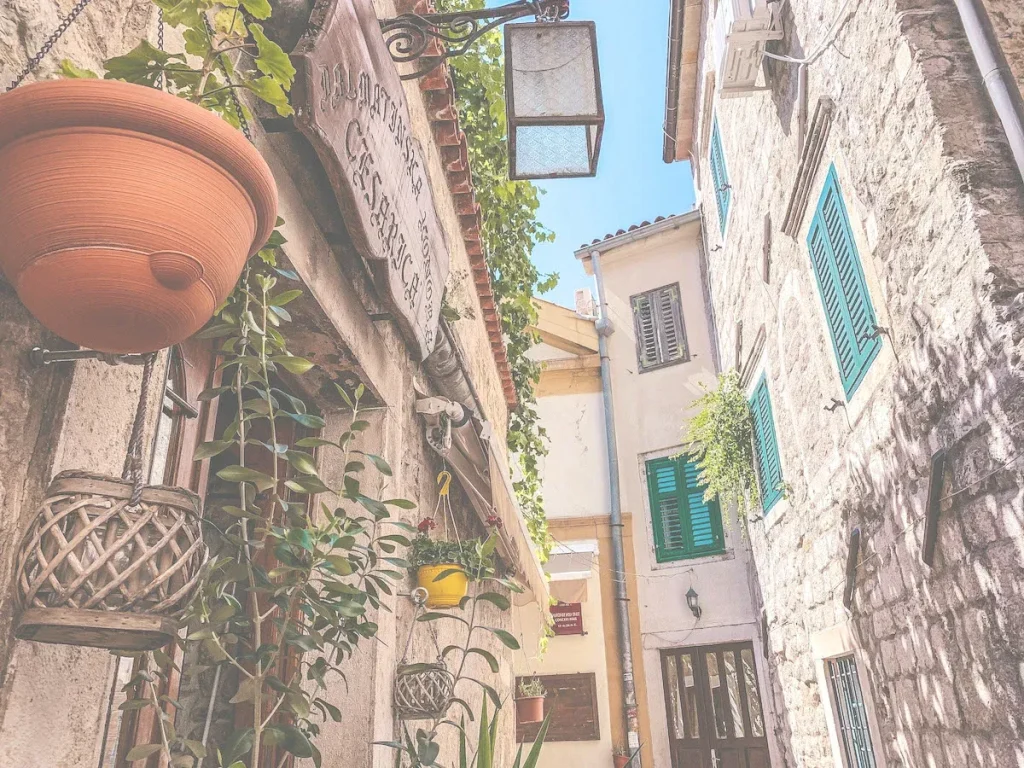perast kotor montenegro

A captivating coastal town, Perast reveals itself to visitors with its well-preserved stone buildings and narrow streets. It became part of the Venetian empire from 1420 to 1797, leaving behind an impressive cultural heritage.
You can visit the Museum of Perast, housed in Captain Bujovic’s 18th-century palace. The edifice features a collection of maritime and ethnographic exhibits.
St. Nicholas’ Church

Dedicated to Saint Nicholas, the church’s stunning bell tower—which is 55 meters high—is one of the most prominent landmarks in the Bay of Kotor. A climb to the top rewards visitors with spectacular panoramic views of Perast and its surrounding vistas. The interior of the church features intricate altars and religious paintings that reflect Perast’s Venetian heritage.
As you stroll through Perast, you’ll notice that the city is filled with both Catholic and Orthodox churches. Many of them were originally built as private family chapels by wealthy families who also owned palaces in the town. The Martinovic Palace, for example, was once one of the most opulent in the region before it was turned into a hotel.
The Church of Our Lady of the Rocks is another highlight of the city. The church is located on a small island in the Bay of Kotor and holds a special place in Montenegro’s history. Legend has it that fishermen threw rocks in the water in honor of Our Lady after successfully returning from their sea voyages. Over time, the rocks accumulated and formed an island in the Bay of Kotor.
The church is a beautiful example of Baroque architecture and features a simple yet elegant design. Its most distinctive feature, however, is a collection of weathered busts that once served as tombstones for local noblemen.
Our Lady of the Rocks

You can’t visit Perast without stopping to see this unique site. Right opposite the town in the bay are two small islands, one of which houses a church known as Our Lady of the Rocks (Gospa od Skrpjela). It’s the only man-made island in the Adriatic and holds a special place in the hearts of Montenegrins. This unique destination has been the votive sanctuary for sailors of Boka Kotorska for centuries. After surviving a shipwreck or a brutal battle with one of the most powerful forces in nature, sailors would come to Our Lady of the Rocks and leave a silver plate as a sign of gratitude.
It’s possible to take a boat ride to the island from the main port in Perast. If you’re visiting during the peak summer season, it might be a good idea to book your tickets ahead of time. There’s also a bus that runs from Kotor to Perast and back every hour. The ticket price is around EUR5 one-way and you can buy it at the bus station in Kotor.
Each year on 22nd July, a tradition called Fasinada takes place on Our Lady of the Rocks. At sunset, a string of boats full of people sail out to the island and toss rocks into the water surrounding it. Then they head to the church to celebrate and enjoy music and dancing.
Risan Beach

If you’ve got a day free to kill in Perast, head down to the town’s beach. It’s small and essentially made of concrete, but it has everything you need for a relaxing afternoon by the water: sun loungers, cabanas, showers, parking, cafe, and more. There’s even a little dock that you can hop on to take a dip in the sea, but it gets crowded fast.
The beach is also right next to the tiny man-made island of Our Lady of the Rocks (Gospa od Skrpjela), the only church on a natural islet in the Bay of Kotor. The islet was constructed by sinking and piling up old ships with rocks and now houses a beautiful Catholic church. The islet’s story starts with a legend that two brothers were fishermen whose ship was lost at sea and rescued by Our Lady of the Rocks who appeared to them on the islet.
While you’re at the beach, grab a drink at one of the nearby waterfront restaurants. There are plenty of options, from upscale dining to local konobas serving seafood and typical Montenegrin cuisine. The views of the water and mountain peaks will have you mesmerized.
Kotor Old Town

Often called a little Dubrovnik, Kotor old town is low-key and less ambitious than its more famous neighbor but still offers a charming blend of stone-built walls, narrow streets, and gorgeous architecture. It’s custom-built for aimless strolling and exploring its many churches, palaces, and aristocratic villas.
Legend has it that on July 22, 1452, two sailors from Perast discovered an icon of Our Lady on a small rock in the bay. After one of the sailors became ill, he climbed to the rock where the icon was found and found himself miraculously recovering. Believing this to be a divine message, the town began a tradition of throwing stones into the water at the site of the rock. Over time, this helped create a islet that now houses the Church of Our Lady of the Rocks (Gospa od Skrpjela).
The old walled city is pedestrian-only and worth exploring slowly to take in all its beauty and architectural detail. Strolling down the backstreets allows you to examine the buildings in closer detail and sometimes enter inside.
The easiest way to get to Perast from Kotor is via the Blue Line bus, which runs every half hour. There are two stops, in front of the Sea Gate and the Kamelija Shopping Centre. You can also catch a taxi from Kotor, but this is likely to be more expensive than the bus.

